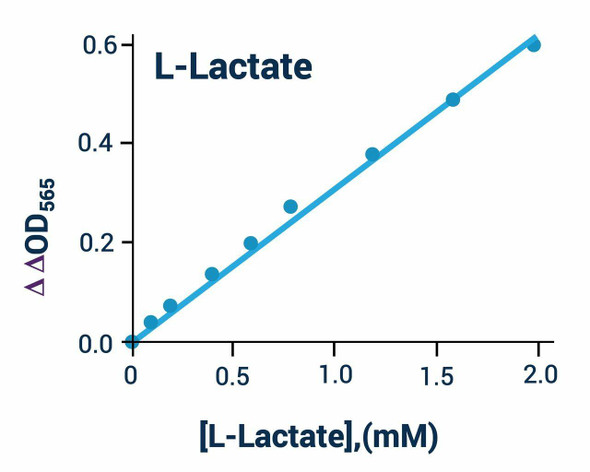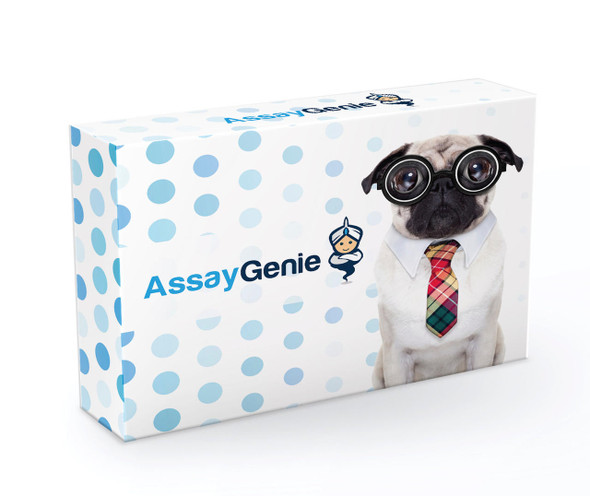L-Alanine Assay Kit - Information
The L-Alanine assay kit provides a simple, direct and automation-ready procedure for measuring alanine concentration.This assay allows for flurometric and colorimetric detection of alanine in biological samples. Alanine is converted into pyruvate which can then be directly measured. The color intensity of the reaction product at 570nm or fluorescence intensity at Ex/Em = 530/585nm is directly proportional to the alanine concentration in the sample.
Applications
For quantitative determination of L-Alanine and evaluation of drug effects on alanine metabolism.
L-Alanine Assay Kit- Key Features
- Sensitive and accurate. Linear detection range in 96-well plate: 1 to 200 alanine for colorimetric assays and 0.4 to 20 for fluorimetric assays.
L-Alanine Assay Kit - Data Sheet | |
| Kit Includes | Developer: 6 mL ALT Enzyme: 120 mL Dye Reagent: 120 mL Cosubstrate: 600 mL Alanine Standard: 400 mL |
| Kit Requires | Pipetting devices, clear or black flat-bottom 96-well plates, plate reader or centrifuge tubes. |
| Method of Detection | OD570nm, or FL530/585nm |
| Detection Limit | 0.4 |
| Samples | Plasma, serum, urine, tissue and culture media |
| Species | All |
| Protocol length | 60 min |
| Size | 100 tests |
| Storage | Store all kit components at -20 °C. |
| Shelf Life | 6 months |
More Details
ALANINE, a nonessential amino acid, is utilized in the glucose-alanine cycle between tissues and the liver. In tissues that metabolize amino acids, amino groups are collected as glutamate by transamination. The amine group is then transferred by alanine transaminase (ALT) from glutamate to pyruvate to form alanine and a-ketoglutarate. The alanine generated is transported to the liver where a reverse ALT reaction occurs and pyruvate is regenerated. Pyruvate is converted through gluconeogenesis to glucose which can then be recirculated to the tissues. Alanine concentration may have some correlation with high blood pressure, energy intake, cholesterol levels and body mass index.








